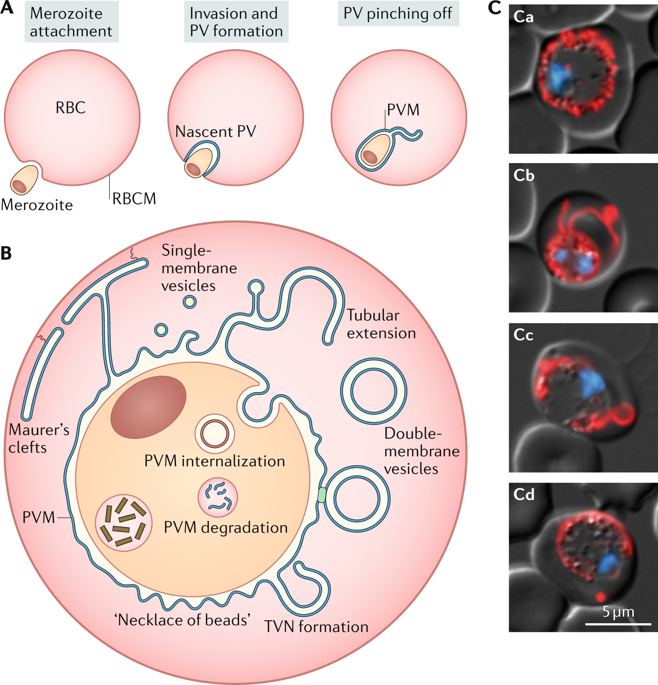Nature Reviews Microbiology ( IF 69.2 ) Pub Date : 2020-01-24 , DOI: 10.1038/s41579-019-0321-3 Joachim M Matz 1 , Josh R Beck 2 , Michael J Blackman 1, 3

|
The pathology of malaria is caused by infection of red blood cells with unicellular Plasmodium parasites. During blood-stage development, the parasite replicates within a membrane-bound parasitophorous vacuole. A central nexus for host–parasite interactions, this unique parasite shelter functions in nutrient acquisition, subcompartmentalization and the export of virulence factors, making its functional molecules attractive targets for the development of novel intervention strategies to combat the devastating impact of malaria. In this Review, we explore the origin, development, molecular composition and functions of the parasitophorous vacuole of Plasmodium blood stages. We also discuss the relevance of the malaria parasite’s intravacuolar lifestyle for successful erythrocyte infection and provide perspectives for future research directions in parasitophorous vacuole biology.
中文翻译:

血液阶段疟原虫的寄生液泡。
疟疾的病理学是由单细胞疟原虫寄生虫感染红细胞引起的。在血液阶段发育期间,寄生虫在膜结合的寄生液泡内复制。作为宿主 - 寄生虫相互作用的中心纽带,这种独特的寄生虫庇护所在营养获取、亚区化和毒力因子输出方面发挥作用,使其功能分子成为开发新型干预策略以对抗疟疾破坏性影响的有吸引力的目标。在这篇综述中,我们探讨了疟原虫寄生液泡的起源、发展、分子组成和功能血液阶段。我们还讨论了疟原虫的液泡内生活方式与红细胞成功感染的相关性,并为寄生液泡生物学的未来研究方向提供了前景。











































 京公网安备 11010802027423号
京公网安备 11010802027423号